BILLIE HOLIDAY / “Billie Holiday Decca Years Mixtape”
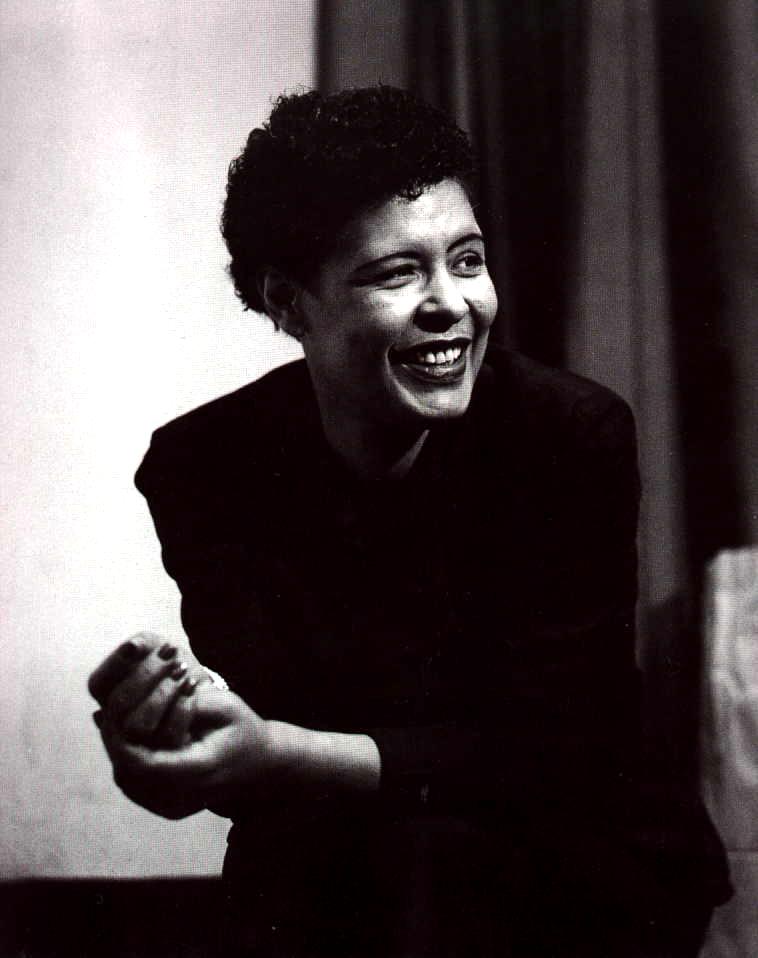 She will always be our first lady of song. Philadelphia-born, Baltimore-reared Elnora Fagan, better known to the world as Billie Holiday, set the tone for modern jazz vocalists—indeed, over fifty years later her work is still the standard by which singers are measured. Sure Aretha Franklin was ultra popular for a decade or two, and of course Nina Simone is enduring, but few singers emulate Franklin or Simone, while nearly all jazz singers owe a little something to Billie.
Recognizing Billie’s massive influence takes nothing away from Franklin’s well-earned popularity or Simone’s enduring artistry but how often is a singer compared to them, how often do young singers reference them in terms of how the youngster is trying to sound?
I will resist the temptation to go on and on about Billie Holiday. This week we are only considering a small six year window in her recording career (1944 – 1950), The Decca Years. She had been released from Columbia Records, whom she would rejoin for the last two albums of her career, including her stellar Lady In Satin release. After Decca she was on Verve, which include my favorites—especially those small combo sides recorded in Los Angeles with Ben Webster.
Yeah, yeah, I know the earlier Billie and Lester Young sides are crucial but let’s be clear we are talking different eras, not just stylistically but also in terms of recording technology.
During the Decca years, Billie was limited to three-minute recording times. By the Verve years, the LP had been introduced. The longer recording times meant that Billie could not only sing the whole song at the slow and medium tempos she favored but there was also room for both she and her band mates to take extended solos.
She will always be our first lady of song. Philadelphia-born, Baltimore-reared Elnora Fagan, better known to the world as Billie Holiday, set the tone for modern jazz vocalists—indeed, over fifty years later her work is still the standard by which singers are measured. Sure Aretha Franklin was ultra popular for a decade or two, and of course Nina Simone is enduring, but few singers emulate Franklin or Simone, while nearly all jazz singers owe a little something to Billie.
Recognizing Billie’s massive influence takes nothing away from Franklin’s well-earned popularity or Simone’s enduring artistry but how often is a singer compared to them, how often do young singers reference them in terms of how the youngster is trying to sound?
I will resist the temptation to go on and on about Billie Holiday. This week we are only considering a small six year window in her recording career (1944 – 1950), The Decca Years. She had been released from Columbia Records, whom she would rejoin for the last two albums of her career, including her stellar Lady In Satin release. After Decca she was on Verve, which include my favorites—especially those small combo sides recorded in Los Angeles with Ben Webster.
Yeah, yeah, I know the earlier Billie and Lester Young sides are crucial but let’s be clear we are talking different eras, not just stylistically but also in terms of recording technology.
During the Decca years, Billie was limited to three-minute recording times. By the Verve years, the LP had been introduced. The longer recording times meant that Billie could not only sing the whole song at the slow and medium tempos she favored but there was also room for both she and her band mates to take extended solos.
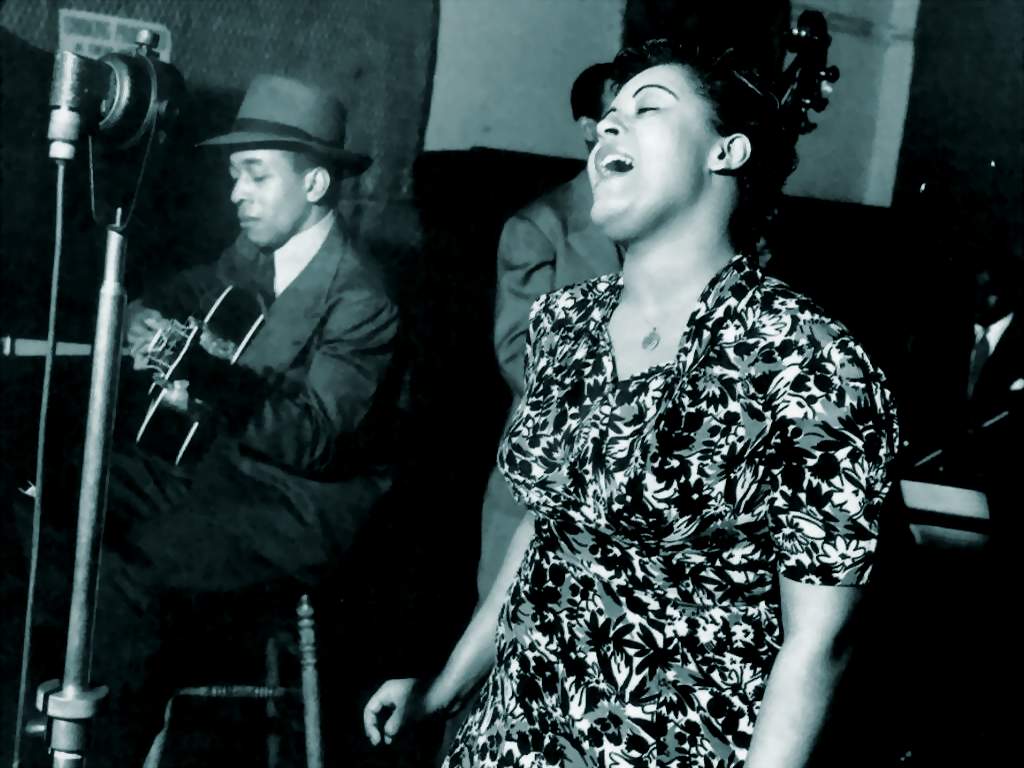 With Decca she was primarily working with studio musicians, able technicians but far from adventurous jazz cats. But despite all the limitations Billie Holiday crafted masterpieces of music even though she had less than 210 seconds to create her musical magic. Moreover, this was no easy accomplishment.
Billie started off in the swing era when big bands were all the rage. During the rise of bebop, which is roughly post War War 2 through the Korean Conflict, the mid-forties to the early fifties, Billie was recording with Decca. Decca’s main producer who worked with Billie, Milt Gabler was aiming to turn Billie into a pop singer. And he succeeded.
Billie set the standard for what was to become known as torch songs, generally speaking, songs of unrequited love. But she was simultaneously capable of the most naked confessions of unconditional love. Do I need to refer you to “I Loves You Porgy,” “My Man,” or “Crazy He Calls Me,” not to mention the ultimate supplication, “Don’t Explain,” which Billie wrote for one of her too numerous two-timing husbands.
Many of the songs on this Mixtape are considered classics today and, indeed at least four or five of them were lionized when they were first released back in the day.
The perennial question for the record industry has been how to make hip music accessible to square audiences. And it’s not just the record companies, in many cases, the artist also wants to achieve maximum acceptance, which acceptance is equated with some mainstream elements such as backing by an orchestra with strings.
In that regard, Billie was not immune to achieving the accouterments of mainstream success, whether it be furs on her back or strings on her recording session. The popularity of the Decca sides enabled her to earn much more money as a recording star and the A&R people at Decca procured sgtrings in the studio for some of her recording sessions. They even threw in choral voices for a smooth, popular sound. This was far, far from the jazz-orientation of the later Verve sides, but this was right in line with what would be done with the Lady In Satin album.
With Decca she was primarily working with studio musicians, able technicians but far from adventurous jazz cats. But despite all the limitations Billie Holiday crafted masterpieces of music even though she had less than 210 seconds to create her musical magic. Moreover, this was no easy accomplishment.
Billie started off in the swing era when big bands were all the rage. During the rise of bebop, which is roughly post War War 2 through the Korean Conflict, the mid-forties to the early fifties, Billie was recording with Decca. Decca’s main producer who worked with Billie, Milt Gabler was aiming to turn Billie into a pop singer. And he succeeded.
Billie set the standard for what was to become known as torch songs, generally speaking, songs of unrequited love. But she was simultaneously capable of the most naked confessions of unconditional love. Do I need to refer you to “I Loves You Porgy,” “My Man,” or “Crazy He Calls Me,” not to mention the ultimate supplication, “Don’t Explain,” which Billie wrote for one of her too numerous two-timing husbands.
Many of the songs on this Mixtape are considered classics today and, indeed at least four or five of them were lionized when they were first released back in the day.
The perennial question for the record industry has been how to make hip music accessible to square audiences. And it’s not just the record companies, in many cases, the artist also wants to achieve maximum acceptance, which acceptance is equated with some mainstream elements such as backing by an orchestra with strings.
In that regard, Billie was not immune to achieving the accouterments of mainstream success, whether it be furs on her back or strings on her recording session. The popularity of the Decca sides enabled her to earn much more money as a recording star and the A&R people at Decca procured sgtrings in the studio for some of her recording sessions. They even threw in choral voices for a smooth, popular sound. This was far, far from the jazz-orientation of the later Verve sides, but this was right in line with what would be done with the Lady In Satin album.
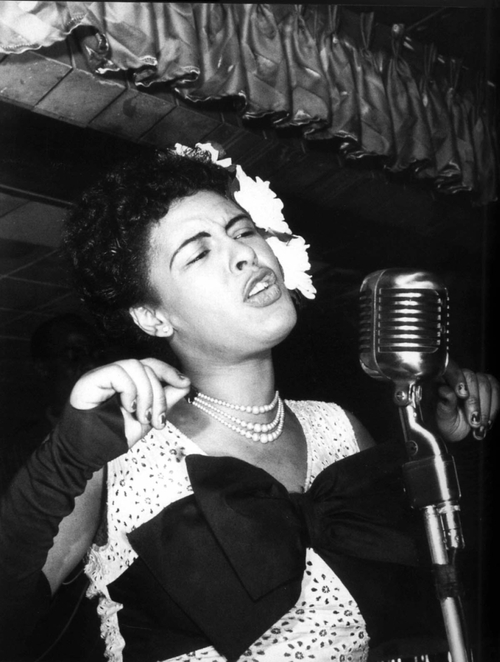 By now, it is a truism that Billie could take bullshit and produce brilliance. Earlier in her career she was given leftovers and was just one of many participating on recording sessions, but during the Decca years the focus was strictly on Billie. Moreover, her infamous lifestyle had not yet negatively affected her voice quality. She sounds younger, vivacious and neither sophisticated nor world-weary.
In later years Billie was far more realistic than optimistic in her sound, more bittersweet, no longer a bubbly ingénue glad for the opportunity to record, but even though her sound is far from “nice,” I believe Billie’s music endured because she gave her all to everything she sang.
What happened with Billie was that in the three phases of her career (the early pre-Decca years when she was young and outgoing, through the middle period when she was a rising star at Decca, on to her mature years with Verve and ending with Columbia), through all the ups and downs, through the various changes in musical styles and recording company efforts to position her within the entertainment industry, through it all, regardless of what was going on with her professionally or personally, Billie Holiday sang like a lover, with utter honesty and absolute commitment.
Billie loved the music and in a sense the reason so many of us have fallen so madly in love with Billie Holiday is because through her music she makes love to us.
I was going to write about some of the different cuts. I was going to try to wax eloquent about this version of one song or another; give you hints in terms of what to listen for in her interpretations, but I think it’s inappropriate to kiss and tell. Like what you like, or don’t like, about Billie Holiday. As far as I’m concerned, although I have read and re-read numerous treaties and exegeses on Billie, in the final analysis, I don’t really think it’s about anything technical from a musical standpoint.
Yes, Billie had a way of phrasing, had impeccable timing, had a good feel for what material was best suited for her, but none of that explains the interior deeptitude of Billie’s sound.
By now, it is a truism that Billie could take bullshit and produce brilliance. Earlier in her career she was given leftovers and was just one of many participating on recording sessions, but during the Decca years the focus was strictly on Billie. Moreover, her infamous lifestyle had not yet negatively affected her voice quality. She sounds younger, vivacious and neither sophisticated nor world-weary.
In later years Billie was far more realistic than optimistic in her sound, more bittersweet, no longer a bubbly ingénue glad for the opportunity to record, but even though her sound is far from “nice,” I believe Billie’s music endured because she gave her all to everything she sang.
What happened with Billie was that in the three phases of her career (the early pre-Decca years when she was young and outgoing, through the middle period when she was a rising star at Decca, on to her mature years with Verve and ending with Columbia), through all the ups and downs, through the various changes in musical styles and recording company efforts to position her within the entertainment industry, through it all, regardless of what was going on with her professionally or personally, Billie Holiday sang like a lover, with utter honesty and absolute commitment.
Billie loved the music and in a sense the reason so many of us have fallen so madly in love with Billie Holiday is because through her music she makes love to us.
I was going to write about some of the different cuts. I was going to try to wax eloquent about this version of one song or another; give you hints in terms of what to listen for in her interpretations, but I think it’s inappropriate to kiss and tell. Like what you like, or don’t like, about Billie Holiday. As far as I’m concerned, although I have read and re-read numerous treaties and exegeses on Billie, in the final analysis, I don’t really think it’s about anything technical from a musical standpoint.
Yes, Billie had a way of phrasing, had impeccable timing, had a good feel for what material was best suited for her, but none of that explains the interior deeptitude of Billie’s sound.
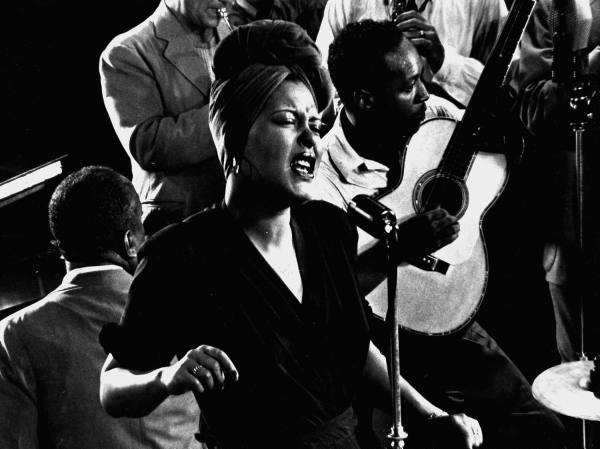 She sang with all her heart, body and soul. Her all. Either you get it or…, or, well, I feel sorry for you, sorry that you are missing out on one of the major musical experiences of the twentieth century.
Or, to quote Louis Armstrong in his duet with Billie on “Sweet Hunk O’ Trash,” responding to detractors and haters, (listen closely) “Fuck ‘em!”
—Kalamu ya Salaam
Billie Holiday Decca Years Mixtape Playlist
She sang with all her heart, body and soul. Her all. Either you get it or…, or, well, I feel sorry for you, sorry that you are missing out on one of the major musical experiences of the twentieth century.
Or, to quote Louis Armstrong in his duet with Billie on “Sweet Hunk O’ Trash,” responding to detractors and haters, (listen closely) “Fuck ‘em!”
—Kalamu ya Salaam
Billie Holiday Decca Years Mixtape Playlist
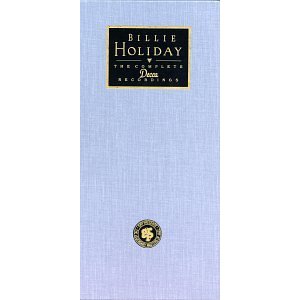 The Complete Decca Recordings
01 “Lover Man (Oh Where Can You Be)?”
02 “What Is This Thing Called Love”
03 “Them There Eyes”
04 “Don't Explain”
05 “Do Your Duty”
06 “ 'Tain't Nobody's Business If I Do”
07 “You Can't Lose A Broken Heart (with Louis Armstrong)”
08 “My Sweet Hunk O' Trash (with Louis Armstrong)”
09 “Gimme A Pigfoot (And A Bottle Of Beer)”
10 “Baby I Don't Cry Over You”
11 “Easy Living”
12 “Solitude”
13 “Good Morning Heartache”
14 “I Loves You Porgy”
15 “My Man (Mon Homme)”
16 “Now Or Never”
17 “That Ole Devil Called Love”
18 “You're My Thrill”
19 “Crazy He Calls Me”
20 “God Bless The Child”
The Complete Decca Recordings
01 “Lover Man (Oh Where Can You Be)?”
02 “What Is This Thing Called Love”
03 “Them There Eyes”
04 “Don't Explain”
05 “Do Your Duty”
06 “ 'Tain't Nobody's Business If I Do”
07 “You Can't Lose A Broken Heart (with Louis Armstrong)”
08 “My Sweet Hunk O' Trash (with Louis Armstrong)”
09 “Gimme A Pigfoot (And A Bottle Of Beer)”
10 “Baby I Don't Cry Over You”
11 “Easy Living”
12 “Solitude”
13 “Good Morning Heartache”
14 “I Loves You Porgy”
15 “My Man (Mon Homme)”
16 “Now Or Never”
17 “That Ole Devil Called Love”
18 “You're My Thrill”
19 “Crazy He Calls Me”
20 “God Bless The Child”
This entry was posted on Monday, December 20th, 2010 at 3:43 am and is filed under Classic. You can follow any responses to this entry through the RSS 2.0 feed. You can leave a response, or trackback from your own site.
Leave a Reply
| top |